The deep sea is a mysterious, almost alien world, where sunlight can’t penetrate, and the pressure is intense. Yet, even in these unthinkable depths, life thrives in fascinating and unexpected ways. Some fish have adapted to the darkness with bioluminescent lures to attract prey, while others have developed incredible features like transparent bodies or massive jaws. These unique adaptations help them survive in an environment where food is scarce, and predators lurk in every shadow. Each species in this list demonstrates the remarkable ways marine life has evolved to endure and thrive in the deep ocean’s extreme conditions. From eerie, light-producing organs to unbreakable armor-like scales, these fish show us just how diverse and resilient life can be.
Barreleye Fish
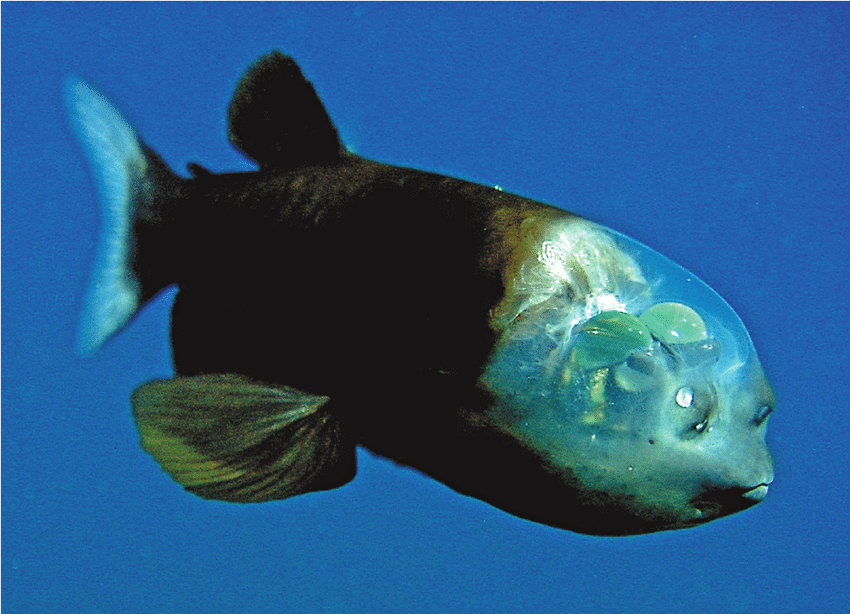
The barreleye fish, also known as the “spook fish,” lives at depths of 2,000 to 2,600 feet in the Pacific Ocean. This fascinating creature is known for its transparent, dome-shaped head, allowing it to look upward through its skull to spot prey above. Its eyes are tubular, highly sensitive to light, and can rotate to provide a wider field of vision, which is crucial for survival in the deep sea’s darkness. Despite its unusual appearance, the barreleye fish remains a proficient hunter, targeting small fish and jellyfish drifting in the dim light. The transparency of its head helps it avoid detection by predators, blending seamlessly with the dark waters. In a low-light environment where food is scarce, this fish has adapted to conserve energy, moving slowly and precisely. Its unique adaptations make it one of the ocean’s most intriguing deep-sea dwellers, showcasing the incredible diversity of life in extreme environments.
Giant Squid
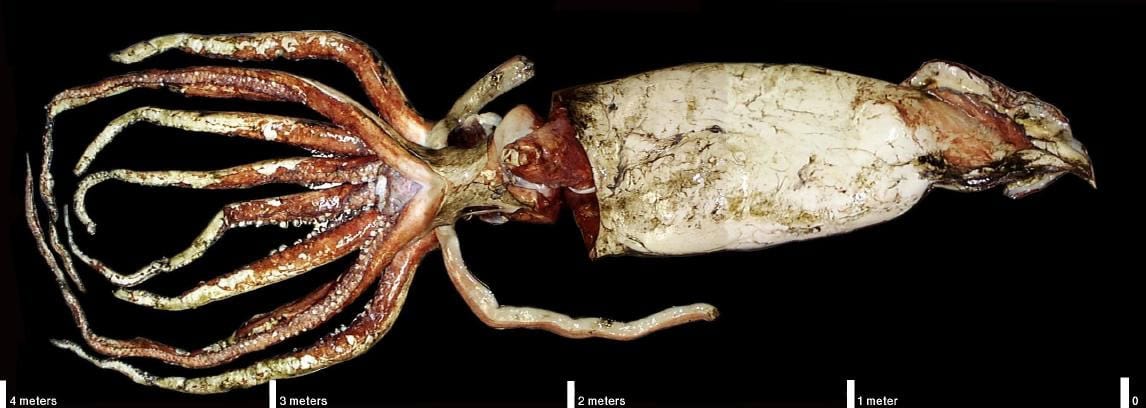
The elusive giant squid inhabits the deep ocean, often at depths over 3,000 feet. These massive cephalopods can reach lengths of up to 43 feet, making them one of the largest invertebrates on Earth. With enormous eyes, the size of dinner plates, they can detect even faint traces of light, crucial for spotting prey in the pitch-black depths. Their long tentacles, lined with powerful suckers, allow them to capture large fish and even smaller squid with ease. Despite their size, they are rarely seen by humans, hiding away in the depths where few creatures dare to venture. Giant squids have a remarkable physiology that allows them to withstand extreme pressure while moving quickly through the water. Legends of sea monsters were likely inspired by these incredible creatures, whose adaptations are finely tuned to life in deep waters.
Dumbo Octopus
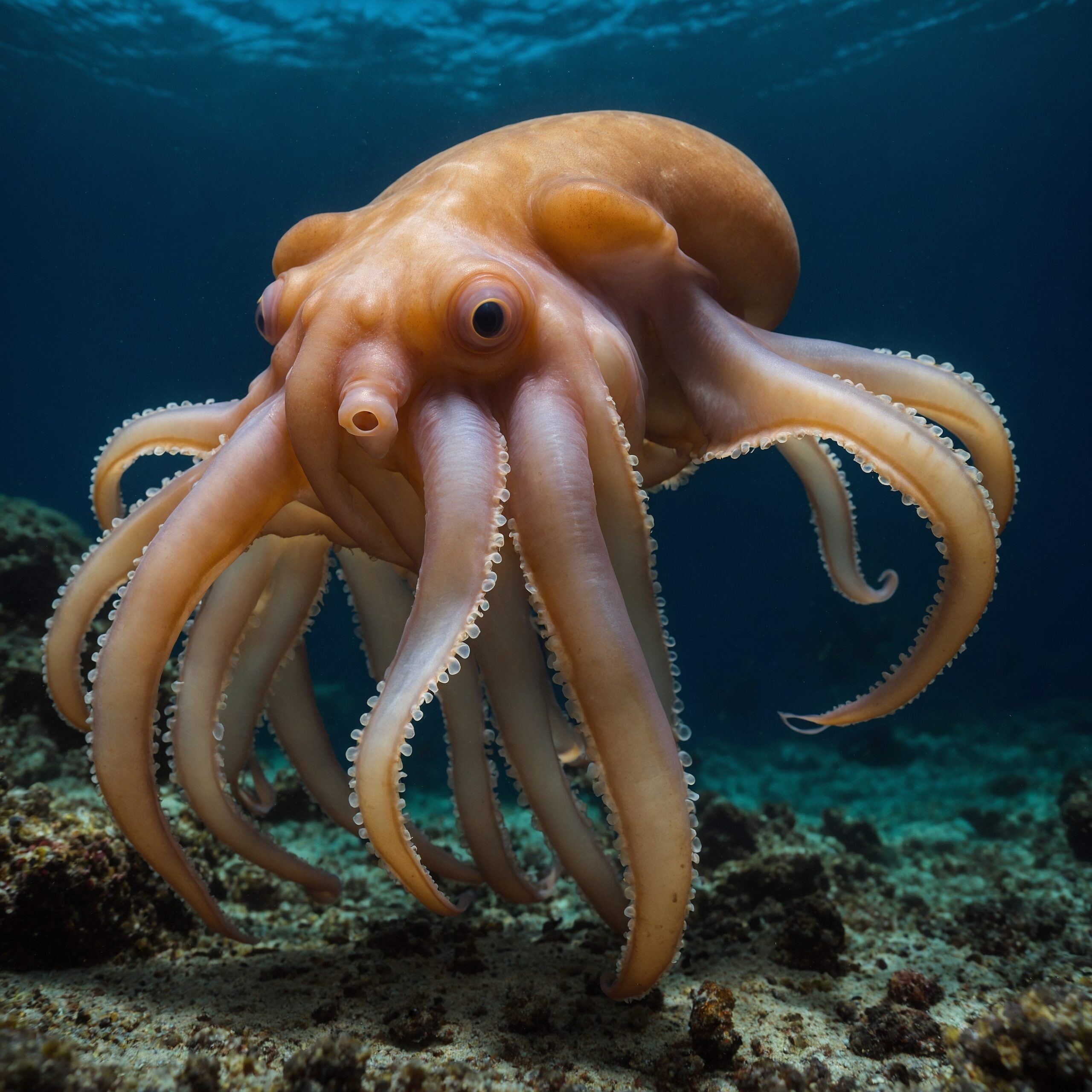
The dumbo octopus is named for its large, ear-like fins that resemble the Disney character Dumbo’s ears. Found at depths of up to 13,000 feet, this creature is one of the deepest-dwelling octopuses known. It uses its “ears” to propel itself gracefully through the water, making it look almost whimsical in an otherwise harsh environment. With a soft, gelatinous body, it’s able to withstand the immense pressure of the deep sea without the need for a rigid structure. Unlike other octopuses, dumbo octopuses are not aggressive hunters; instead, they hover just above the seafloor, searching for small invertebrates to eat. They swallow their prey whole, taking in whatever they encounter in the nutrient-poor waters. These octopuses showcase the delicate beauty that exists even in the darkest parts of the ocean.
Anglerfish
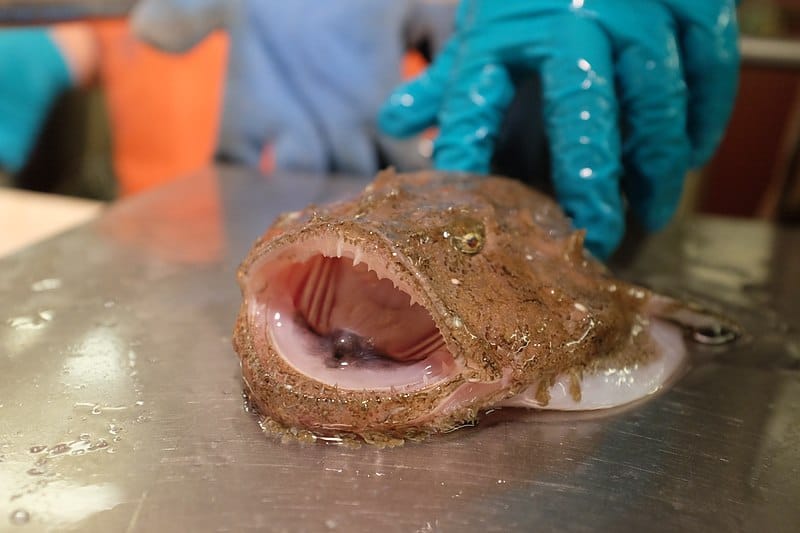
The anglerfish is known for the bioluminescent lure that extends from its head, used to attract prey in the pitch-dark waters. Female anglerfish, who carry the glowing lure, can live as deep as 6,600 feet, where sunlight cannot reach. Their bodies are adapted for ambush hunting, with expandable jaws and stomachs that allow them to consume prey twice their size. When prey swims near, the anglerfish snaps its massive jaws, taking in both water and its meal. The lure, which contains light-producing bacteria, is an effective hunting tool in the darkness. Males are much smaller and latch onto females to survive, becoming dependent for sustenance. This remarkable adaptation illustrates the extreme survival strategies found in the deep sea.
Viperfish
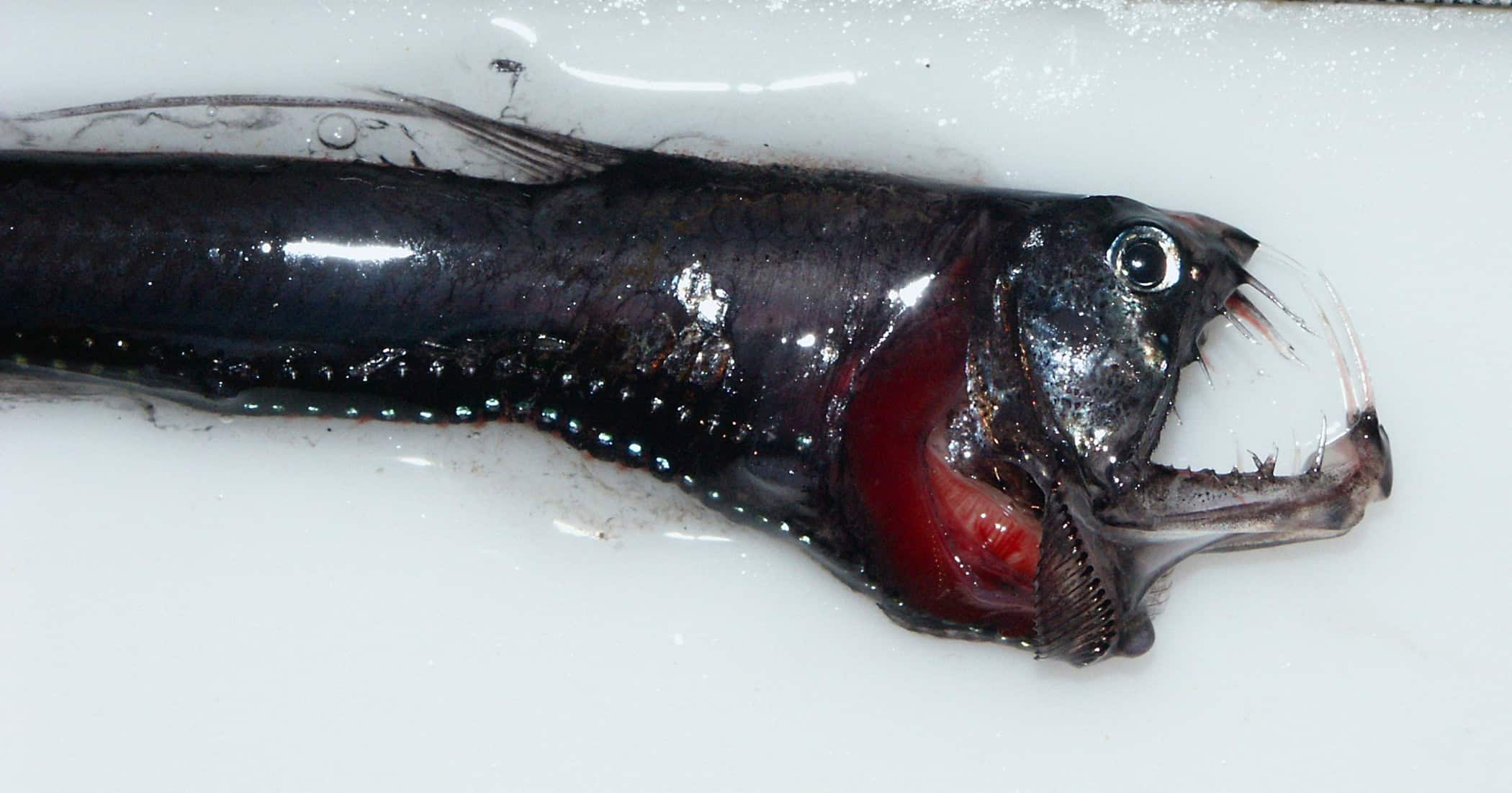
The viperfish is one of the most terrifying predators of the deep sea, recognized by its long, fang-like teeth. It can be found at depths of up to 9,000 feet, where it uses a bioluminescent organ on its dorsal fin to attract prey. The viperfish’s teeth are so large that they cannot fit inside its mouth, curving outside even when it’s closed. When it senses prey, it rushes forward with its jaws agape, impaling the unfortunate creature on its needle-like teeth. This fish has evolved to strike quickly in the darkness, relying on speed and aggression. Its ability to flash light in the dark helps it lure smaller fish into range. The viperfish exemplifies the brutal survival tactics required in the deep ocean.
Frilled Shark
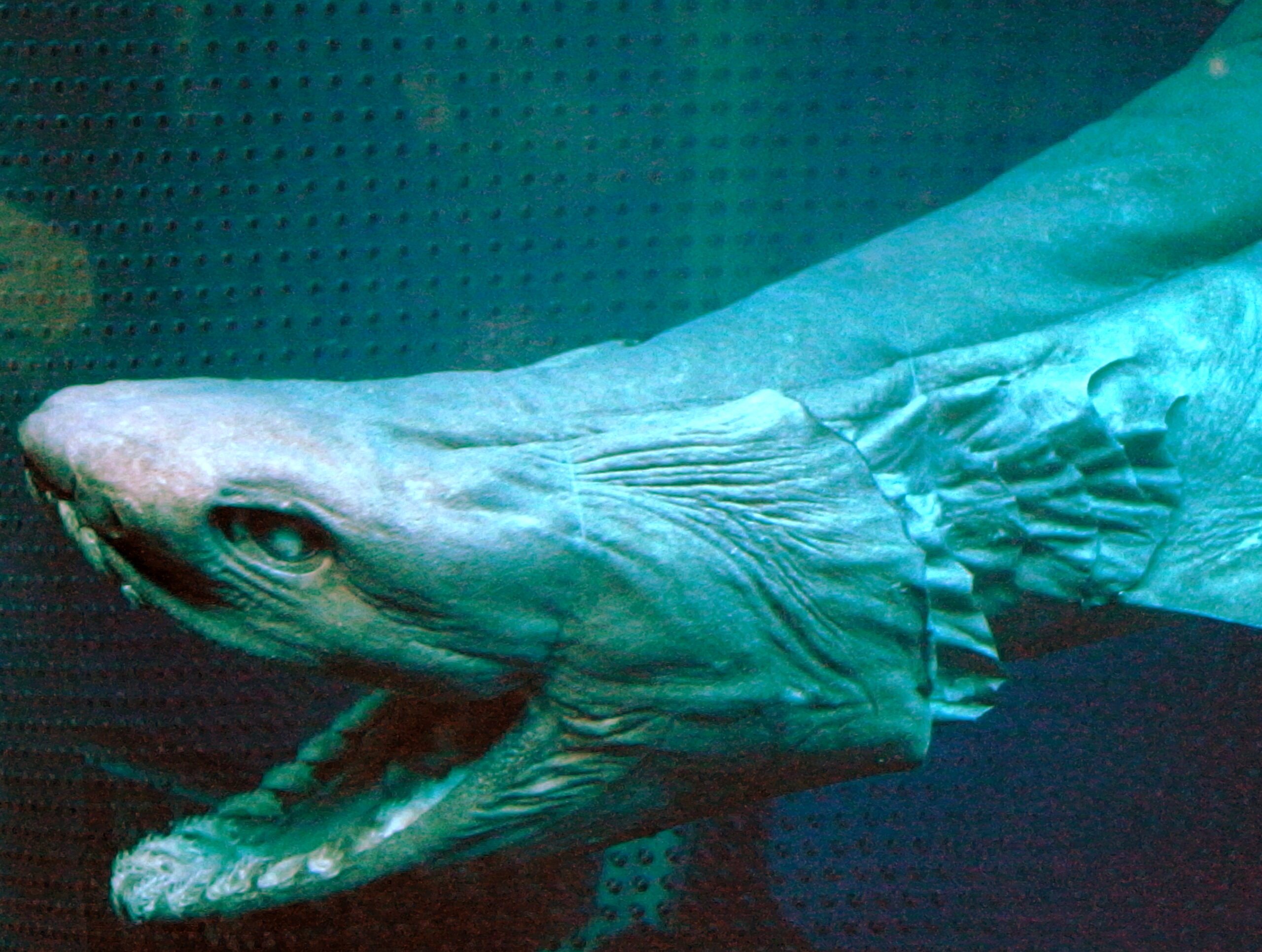
Often described as a “living fossil,” the frilled shark has remained relatively unchanged for millions of years. It resides in depths reaching 5,000 feet and has a distinctly eel-like body and six pairs of frilly gill slits. This shark’s long, flexible body allows it to bend and strike at prey with sudden force. Its mouth is lined with multiple rows of needle-sharp teeth, ideal for catching slippery fish and squid. Unlike many deep-sea predators, frilled sharks are known to move slowly, conserving energy in the low-food environment. They can even survive long periods without food, making them efficient hunters in the deep sea. The frilled shark’s ancient appearance and unique adaptations make it a fascinating specimen from the ocean’s depths.
Deepsea Lizardfish

The deepsea lizardfish is a fearsome predator that resides at depths of up to 6,000 feet. Its elongated body and sharp, needle-like teeth are perfect for snaring prey, which it captures with lightning speed. Lizardfish are ambush predators, lying motionless on the ocean floor and waiting for unsuspecting fish or crustaceans to approach. They are well-camouflaged, with bodies that blend seamlessly with the seabed. Unlike other fish, they do not have swim bladders, an adaptation that helps them avoid floating in the high-pressure environment. Their hunting style requires patience, but the reward is a well-earned meal in the scarce deep-sea ecosystem. The deepsea lizardfish exemplifies the patience and precision of deep-sea hunters.
Pacific Blackdragon
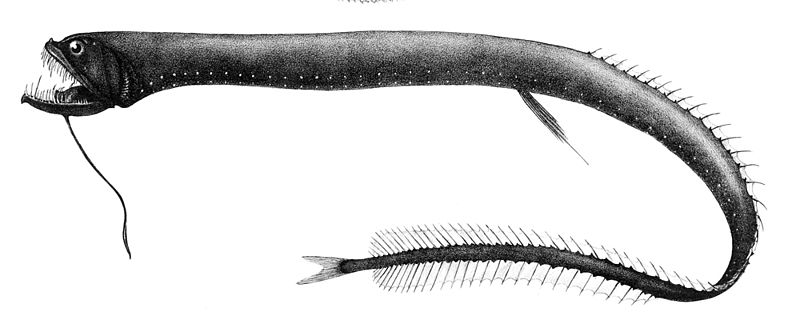
The Pacific blackdragon is a formidable predator that lurks in depths around 6,600 feet. Female blackdragons have long, slender bodies and fang-like teeth, making them efficient hunters in the dark waters. They possess bioluminescent spots along their bodies that can be used to attract prey or communicate with others. Unlike females, the male blackdragon is small and lacks a developed digestive system, existing solely to reproduce. Female blackdragons also have a chin barbel with a glowing tip, which they use as a lure to entice prey within striking distance. These fish have dark, almost black skin that helps them remain invisible in the depths. Their gender-specific roles and adaptations make them one of the ocean’s most intriguing examples of extreme evolution.
Dragonfish
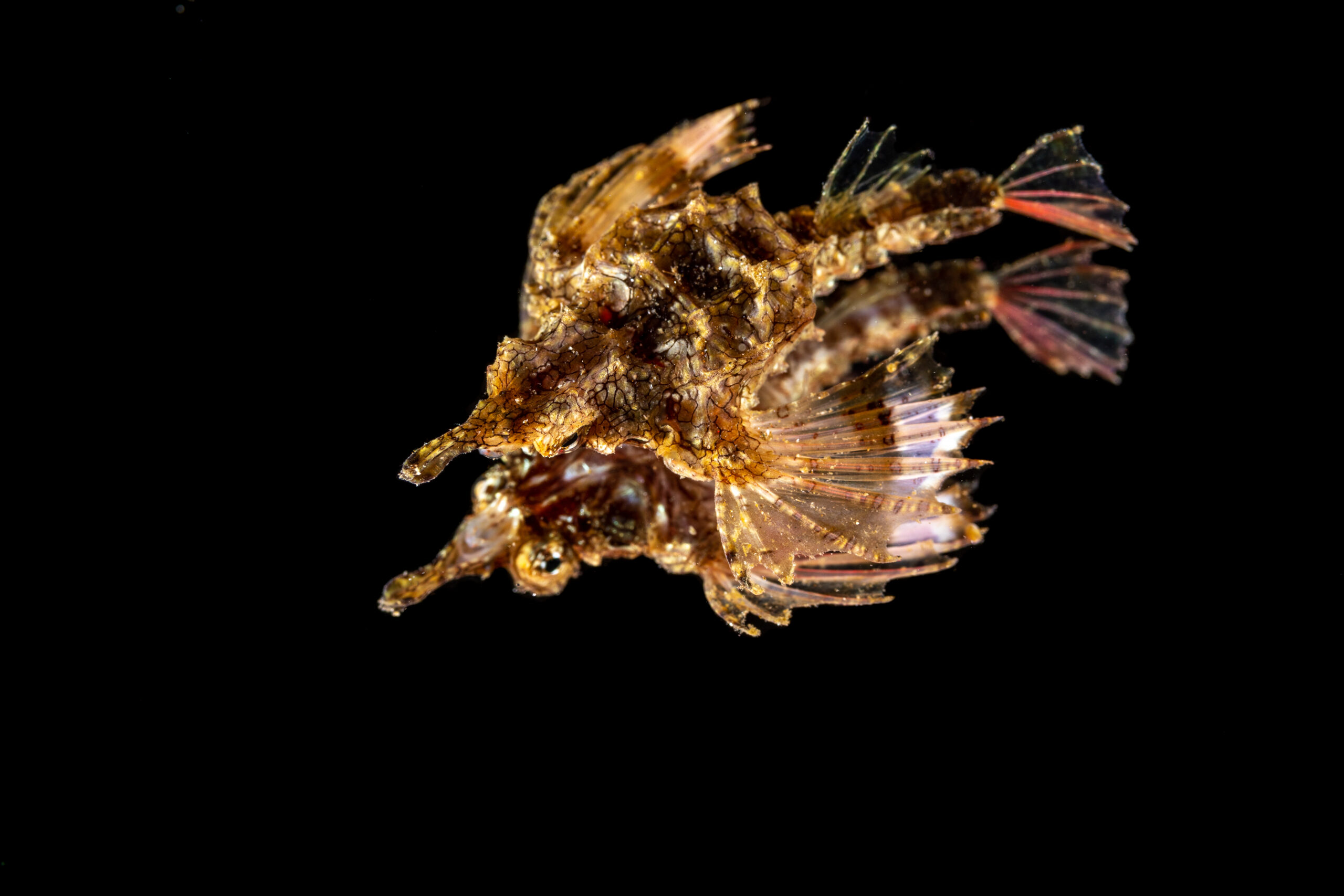
Dragonfish live in depths of around 5,000 feet, where their black, scale-less bodies help them avoid detection. They are known for their bioluminescent barbel, which dangles from their chin to lure prey into close range. With sharp, needle-like teeth, dragonfish strike quickly, seizing prey in the blink of an eye. Their eyes are highly sensitive to the faint light emitted by other deep-sea creatures, giving them a hunting advantage in the darkness. Unlike many deep-sea fish, dragonfish can produce light in multiple colors, using it for communication and hunting. This ability to emit light adds a layer of complexity to their survival tactics. Their striking features highlight the intricate adaptations of life at the ocean’s extreme depths.
Snailfish
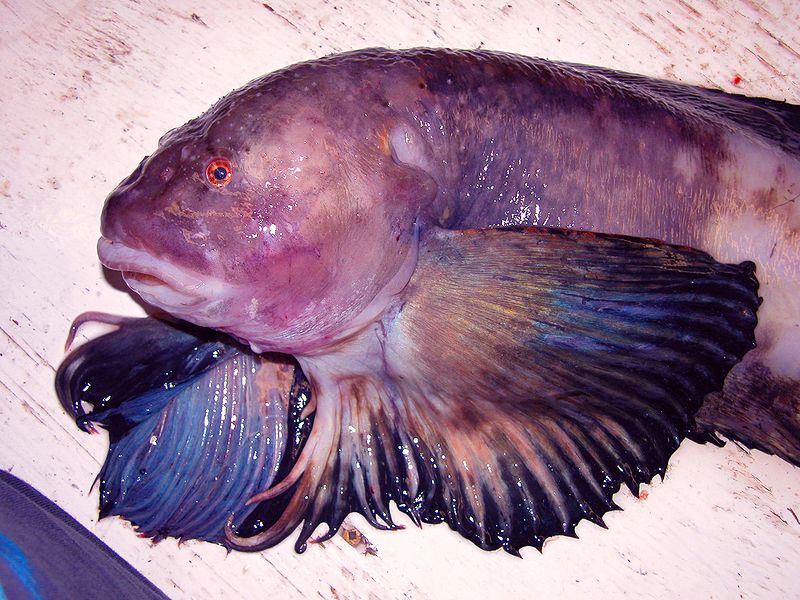
Snailfish are found at some of the greatest depths recorded, surviving at over 26,000 feet. They have soft, jelly-like bodies that can endure the intense pressure of the ocean’s hadal zone. Snailfish are not aggressive predators; instead, they feed on tiny invertebrates found on the seafloor. Their bodies are transparent, a common trait among deep-sea dwellers, which aids in camouflage. Despite the extreme environment, they thrive, even reproducing in these harsh conditions. The snailfish’s endurance and resilience have made it an important subject of scientific research. Its adaptability in the face of extreme conditions underscores the incredible diversity of life in the deep ocean.
Gulper Eel
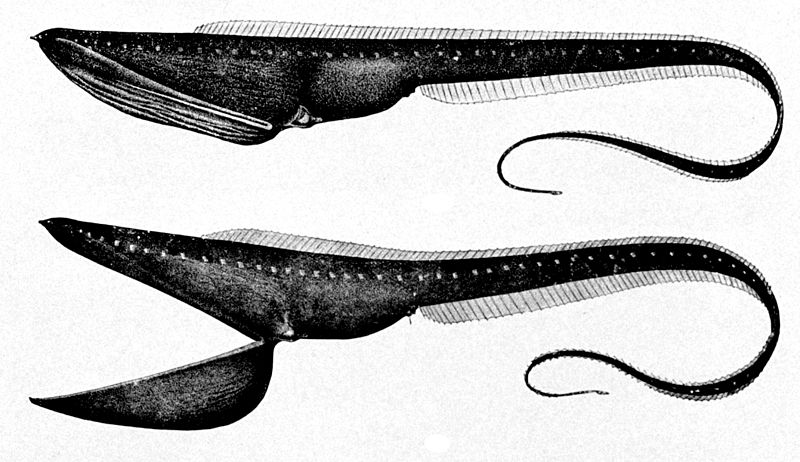
The gulper eel, also called the pelican eel, is known for its enormous, pouch-like mouth, which it uses to gulp down prey. Found at depths of up to 9,800 feet, it can expand its jaw wide enough to swallow fish almost as large as itself. The eel’s tail is bioluminescent, which it uses as a lure to attract prey in the darkness. Its long, slender body is adapted to move efficiently in the low-light, high-pressure environment of the deep sea. When not in use, the eel’s mouth can fold back, giving it a streamlined appearance. These unique features allow the gulper eel to maximize its hunting success in an environment where food is scarce. Its extraordinary anatomy makes it a marvel of deep-sea adaptation.
Giant Grenadier
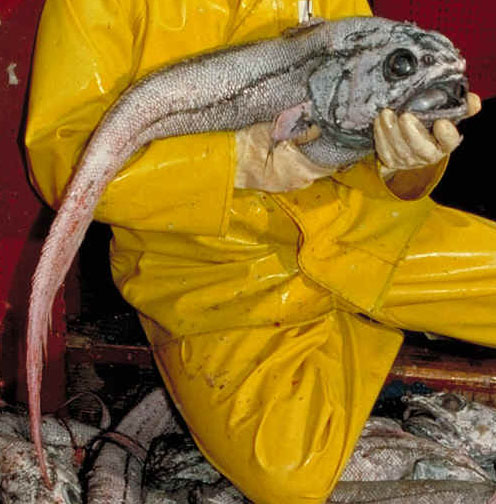
The giant grenadier is a deep-sea fish commonly found at depths of 3,300 to 6,500 feet. It has a long, tapering tail and large eyes that help it navigate the dimly lit ocean floor. This fish can grow up to six feet in length, making it one of the largest inhabitants of the deep ocean. Grenadiers are slow-moving scavengers, feeding primarily on crustaceans and other small invertebrates. Their extended lifespan, sometimes reaching over 60 years, allows them to thrive in an environment with limited resources. Their physiology is well-suited to withstand the extreme pressure and cold temperatures of the deep sea. The giant grenadier’s resilience and size make it a dominant presence in its habitat.
Glass Squid
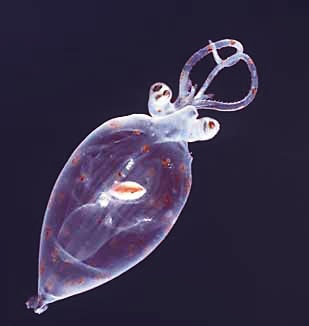
The glass squid is named for its transparent body, which helps it evade predators in the deep sea. Found at depths of around 2,000 feet, this squid has developed specialized organs that produce light, known as photophores, which it uses to blend with the faint light above. Glass squids are known to inflate themselves with water to appear larger, deterring potential threats. They feed on small fish and plankton, relying on their transparency for both hunting and defense. The squid’s eyes are positioned to detect movement from all directions, providing a critical advantage in the darkness. Their unique adaptations allow them to thrive in a world where light is scarce. The glass squid’s transparent body and bioluminescent abilities make it one of the ocean’s most unique inhabitants.
Cookiecutter Shark
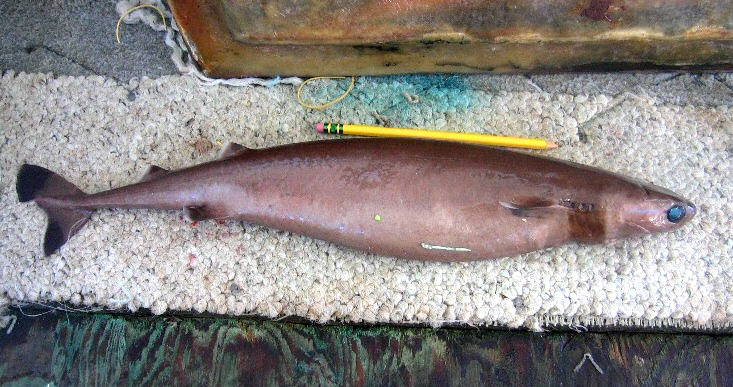
The cookiecutter shark is a small, yet fearsome predator that survives at depths of around 3,300 feet. Known for its round, razor-sharp teeth, this shark leaves circular wounds on much larger animals, such as whales and dolphins. It attaches itself to its prey with suction and twists its body to remove a small “cookie-sized” chunk of flesh. This parasitic feeding style allows it to extract nutrition from a wide variety of marine animals without needing to engage in direct combat. The shark has photophores on its underside, creating a glow that helps it blend with the ambient light from above, avoiding detection. Despite its small size, the cookiecutter shark has a powerful bite, making it a unique predator. Its unusual feeding strategy illustrates the diverse survival mechanisms of deep-sea life.
Blobfish
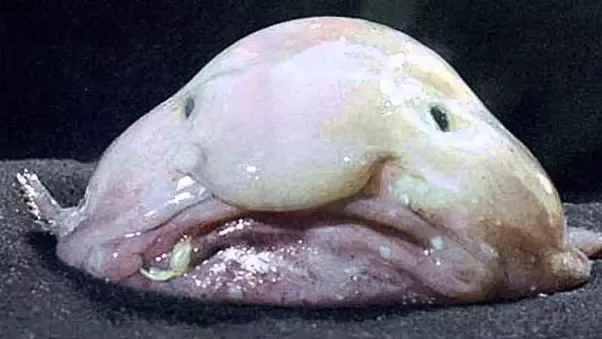
The blobfish is often considered one of the ugliest creatures in the ocean, living at depths of up to 3,900 feet. This fish’s gelatinous body is adapted to the high-pressure environment, where it appears more solid; out of water, it loses its structure, becoming blob-like. Blobfish lack a swim bladder, which most fish use to control buoyancy, relying instead on their low-density flesh to float just above the seafloor. They are scavengers, feeding on anything edible that drifts within reach. The blobfish’s sedentary lifestyle conserves energy, which is essential in its nutrient-poor habitat. Although it may appear unattractive, its body is perfectly suited for its deep-sea environment. The blobfish exemplifies the unusual forms of adaptation needed to survive in extreme ocean depths.
This article originally appeared on Rarest.org.
More From Rarest.Org
Dinosaurs have always captured the imagination with their immense size and mystery, but some species were so massive that they defy belief. Among the largest creatures to ever walk the Earth, these giants lived millions of years ago, dominating the prehistoric landscapes. Read more.
Nostalgia has a way of making everyday items from our childhood feel priceless, but for some vintage toys from the 80s and 90s, that feeling has turned into real value. Collectors and enthusiasts alike are willing to pay top dollar for iconic toys that were once staples of playrooms everywhere. Read more.
Street food offers a unique glimpse into the culture and flavors of a place, often serving as a reflection of local traditions and ingredients. While some street foods have gained global fame, many others remain underrated and deserve more recognition for their creativity, taste, and cultural significance. Read more.



